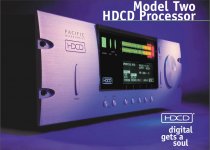So if one is wants a succinct (but accurate) description of their architecture, how about:The TDA1541, 1543 & 1545 are not R2R DAC's.
1541 = DEM*
1545 = CC**
* Dynamic Element Matching
** Continuous-calibration
BTW: Does anyone know the inner workings of the early Sony DACs? E.g., CX20017, etc.
That is, what was their architecture?
Not much info in the datasheet:
CX20017 pdf, CX20017 description, CX20017 datasheets, CX20017 view ::: ALLDATASHEET :::
That is, what was their architecture?
Not much info in the datasheet:
CX20017 pdf, CX20017 description, CX20017 datasheets, CX20017 view ::: ALLDATASHEET :::
If I'm not totally wrong, the old Philips DACs were some kind of early "segmented" DACs based on transistor current sources. So definitley not resistor based DACs as did the US counterparts BB and AD.
Somehow the Dutch genuinely knew, that a cheap to manufacture semiconductor-IC solutions needs a semiconductor based approach 😉
Apparently, the US-based firms tried to solve that long time with what I would call a brute-force (laser-trimming + manual trimming) approach until they switched over to delta-sigma. Philips had some clever solutions in-between (CC-DAC).
But as we all know - cleverness in technical details is most of the time not the best approach to remain in business 😉
Somehow the Dutch genuinely knew, that a cheap to manufacture semiconductor-IC solutions needs a semiconductor based approach 😉
Apparently, the US-based firms tried to solve that long time with what I would call a brute-force (laser-trimming + manual trimming) approach until they switched over to delta-sigma. Philips had some clever solutions in-between (CC-DAC).
But as we all know - cleverness in technical details is most of the time not the best approach to remain in business 😉
Last edited:
...
DOES ANYONE MAKE A VERY HIGH END A/D CONVERTER USING R-2R CHIPS? Either 2 channel, multichannel, whatever? And who makes it?
...
SAR is what are you looking for 🙂
